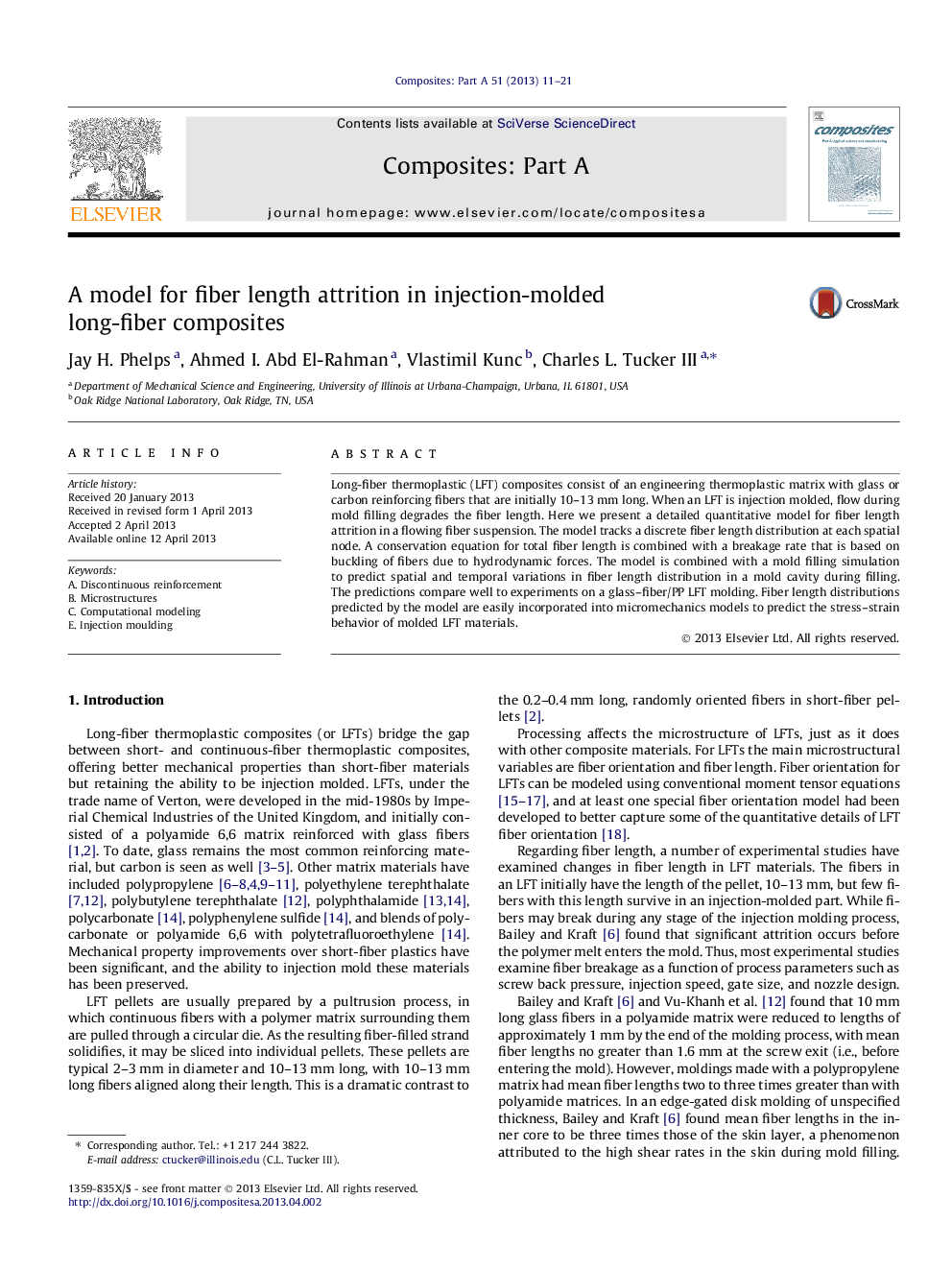| Article ID | Journal | Published Year | Pages | File Type |
|---|---|---|---|---|
| 7892680 | Composites Part A: Applied Science and Manufacturing | 2013 | 11 Pages |
Abstract
Long-fiber thermoplastic (LFT) composites consist of an engineering thermoplastic matrix with glass or carbon reinforcing fibers that are initially 10-13Â mm long. When an LFT is injection molded, flow during mold filling degrades the fiber length. Here we present a detailed quantitative model for fiber length attrition in a flowing fiber suspension. The model tracks a discrete fiber length distribution at each spatial node. A conservation equation for total fiber length is combined with a breakage rate that is based on buckling of fibers due to hydrodynamic forces. The model is combined with a mold filling simulation to predict spatial and temporal variations in fiber length distribution in a mold cavity during filling. The predictions compare well to experiments on a glass-fiber/PP LFT molding. Fiber length distributions predicted by the model are easily incorporated into micromechanics models to predict the stress-strain behavior of molded LFT materials.
Keywords
Related Topics
Physical Sciences and Engineering
Materials Science
Ceramics and Composites
Authors
Jay H. Phelps, Ahmed I. Abd El-Rahman, Vlastimil Kunc, Charles L. III,
